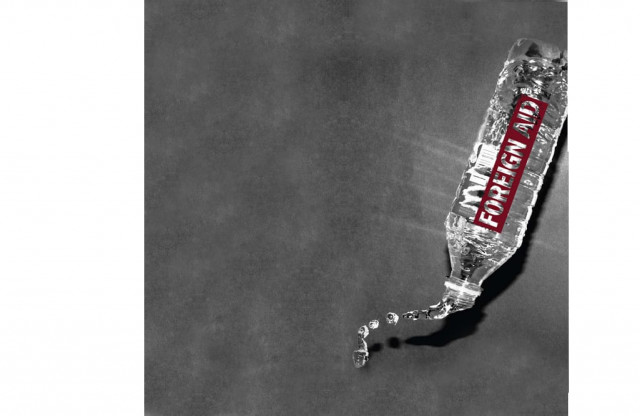Why higher prices are unjustified despite flood losses
Even with the added expenses of transport and lodging, the increase in animal prices appears unjustified.

Goat, cow or camel, whatever sacrificial animal you may wish to purchase for Eidul Azha, haggling over the price is almost as essential to our culture as the ritual of sacrifice is to our faith. And while a trip to the cattle market is an annual ordeal for most, this year’s experience is proving to be extraordinarily harrowing.
Sellers claim that the recent floods have caused so much devastation of livestock that prices of sacrificial animals were bound to rocket. But the markedly lower number of buyers (compared to those who are ‘just looking’) in markets seems to suggest that the spiralling prices are at least partly unjustified.
“At the biggest cattle market of the city, television stars, former cricketers and other celebrities have put up stalls,” asserted General Secretary Meat Merchants Welfare Association Jahangir Akhtar. “It is obvious that these people have just dived into the pool to rake in enormous profits from the seasonal surge in demand.”
Akhtar, a butcher by profession, purchases goats, sheep and cows all year round. While he conceded that the supply of livestock has in fact been affected because of the recent flooding, he is certain that many sellers are taking the public for a ride by charging disproportionately higher rates.
“Look at the stalls,” said Akhtar. “Very few of the sellers are from interior Sindh and other affected areas,” he pointed out, adding: “You will mostly find people from the city who are working for those who purchased animals from flood survivors at very cheap rates and are now minting money.”
Officials from the livestock department also concur with this point of view. “When the water came, we saw many villagers left the katcha (reverine) areas, sold their herds to the first buyer they could find and fled to relief camps,” said Qaiser Jatoi, district livestock officer for Thatta.
This means that those who reared animals over the year are, for the most part, not the ones who are enjoying the profits.
Not to say that the country has not endured unprecedented losses in the recent devastating deluge. Country-wide livestock losses were estimated at around Rs250 billion, according to data released by Dairy Pakistan in collaboration with the United Nations’ Food and Agriculture Organisation.
In Khyber-Pakhtunkhwa, more than 72,862 large animals (cows and buffalo) and 20,364 small animals (goats and sheep) perished, while in Sindh 211,902 cattle died.
However, Dairy Pakistan officials also cited that these losses accounted for only about six per cent of the total livestock in the country. Moreover, they assert that fatalities were significantly lower in smaller animals as these herbivores graze in drier areas away from rivers and lakes.
“Many of the animals sold for sacrifice are predominantly raised on concentrate feed,” said Dairy Pakistan Director K-P Asim Ejaz. “The availability and prices of concentrate feed have remained relatively unaffected by the floods and so the cost of raising these animals has actually not increased significantly.”
What the sellers have to say
“Bigger animals, including cows and buffalo, are brought here from Dera Ghazi Khan, Multan, Bahawalpur and adjoining areas in Punjab,” said General Secretary Livestock Traders Association Latif Qureshi. “Goats and sheep are mostly brought from Sukkur, Jacobabad, Mirpurkhas and other areas of northern Sindh,” he added.
Qureshi asserted that there were high livestock losses in most of these areas due to the recent floods. “In addition, it has become more expensive to provide fodder for the animals. Many herdsmen also had to spend extra on feeding their herds when they were on the move in search for dry land,” he contended.
“I rent tube lights at Rs40 per day, a can of water costs Rs25 and then there is the cost of fodder,” said Inayat Din, a seller at a makeshift market in Korangi. “Getting a single goat to the city and keeping it at a stall for sale may cost about Rs5,000,” claimed the representative of livestock traders.
But even with the added expenses of transport and lodging, the exponential increase in prices of animals appears unjustified.
A city government official requesting anonymity told The Express Tribune: “Prices are unfairly high but there is little we can do to control them because this whole game takes place in a very short span of time and sellers are dispersed all over the city and adjoining areas.”
The spike in rates at the more traditional cattle markets has seemingly pushed customers towards establishments that sell animals on the basis of weight, such as the army-run CSD stores. Goats were available for as little as Rs7,000 on Monday at markets set up within the boundaries of some religious institutions in the city.
With memories of the largest natural disaster to hit Pakistan still fresh, many are digging deeper into their pockets in the sacrificial spirit. However, the most disturbing aspect of the spiralling prices of sacrificial animals is that those herdsmen whose livelihoods depend solely on this trade have largely missed out on the windfall gains that are instead being enjoyed by influential profiteers.
Published in The Express Tribune, November 16th, 2010.



















COMMENTS
Comments are moderated and generally will be posted if they are on-topic and not abusive.
For more information, please see our Comments FAQ